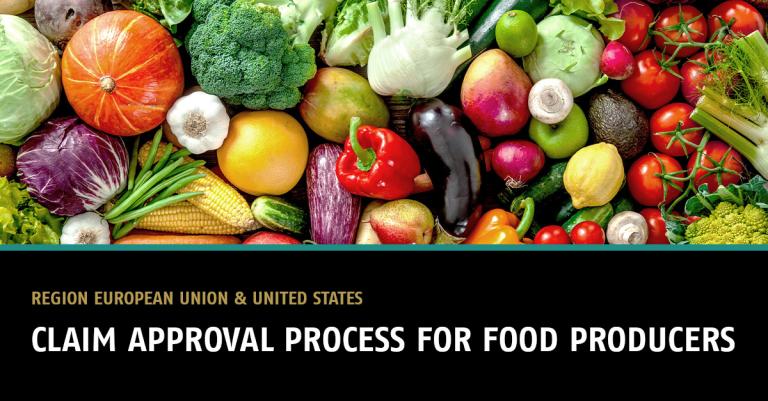Claim approval process for Food Producers
Food producers would like to present their product in the best possible way. There are many ways to show that one product has better qualities or is preferable over another within the same product category. One possibility is to use claims to distinguish their product from their competitors.
The European Commission defines two types of claims: Health claims and Nutrition claims, both with their detailed requirements set out in Regulation (EC) No 1924/2006.
- Nutrition claim: any claim which states, suggests, or implies that a food has a particular beneficial nutritional property due to energy value or nutrient content.
- Health claim: strictly shows positive effect on human health, which is confirmed by scientific evidence and in many cases requires a registration process.
Existing claims can be checked on the EC website by downloading the complete dataset of nutrition and health claims. This list is updated after approval of the new claim.
Nutrition claim (e.g., Low fat, Energy-reduced, no added sugars, Low salt, High fibre, Source of omega-3 fatty acids) is used more often because it is easier to confirm.
The two types of claims mentioned above are not only ones used in the EU. There are many different types of claims that can be found on food products. For instance, an ingredient claim (made from whole almonds), natural claim (100% natural), recycling claim (made from recycled plastic), “no added” claim (no added MSG), process claim (sun dried, hand-picked), origin claim (tomatoes from Italy) and other ones which could be classified in different categories.
A claim confirmation needs to be proved and checked by claim experts against the requirements of the local market of interest.
In the United States, the approach for claim approval, is different to follow. The Food and Drug Administration (FDA) presents 3 main claims categories: Health claims, Nutrition claims and Structure/Function claims. It is important to keep in mind, that every claim must be in accordance with labeling laws and regulations and is accurate and not misleading.
- Health claim: in accordance with the FDA definition, this claim sentence needs to have two essential components: a substance and a disease or health-related condition (e.g., "Vitamin C increases iron absorption” or “Vitamin C support immune system”)
- Structure/Function claims: these are statements that address a role of a specific substance in maintaining normal healthy structures or functions of the body.
- Nutrient content claims: this claim describes the level of a nutrient in the product using terms like “free”, “high”, “low”, “more”, “reduced.”
The use of claims is a valuable tool for attracting consumers to purchase a particular product. However, prior to making a claim, the food producer must first ensure that the claim is correct and can be one of the types of claims that can be made in the market of the sale.
knoell experts can assist in the process of claim approval by helping to confirm or re-write a claim in the correct form. During the process of claim approval and creation, the following services can be offered: regulatory check of the product formulation, certification, additional regulations compliance (international/local level), changes in the product technology, external searches, and review of the market requirements. Nevertheless, it is important to make claims if relevant because this is a widespread practice in industry to differentiate products in the marketplace.
Read more here:
https://food.ec.europa.eu/safety/labelling-and-nutrition/nutrition-and-health-claims/eu-register-health-claims_en
https://www.fda.gov/media/164194/download (Food Code)
https://www.fda.gov/food/food-labeling-nutrition/label-claims-conventional-foods-and-dietary-supplements


